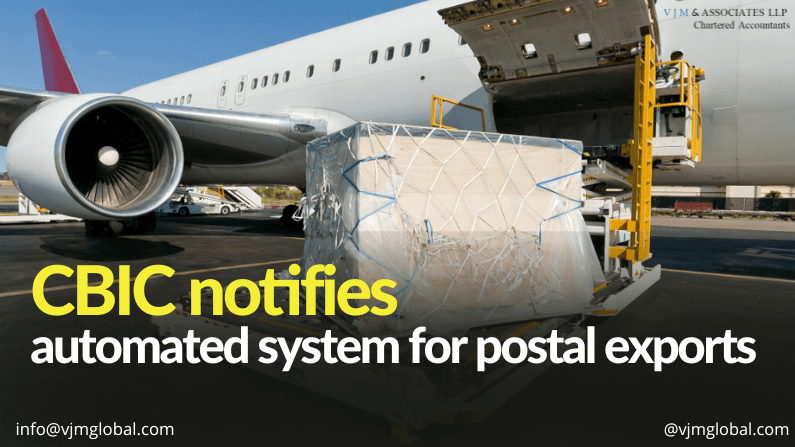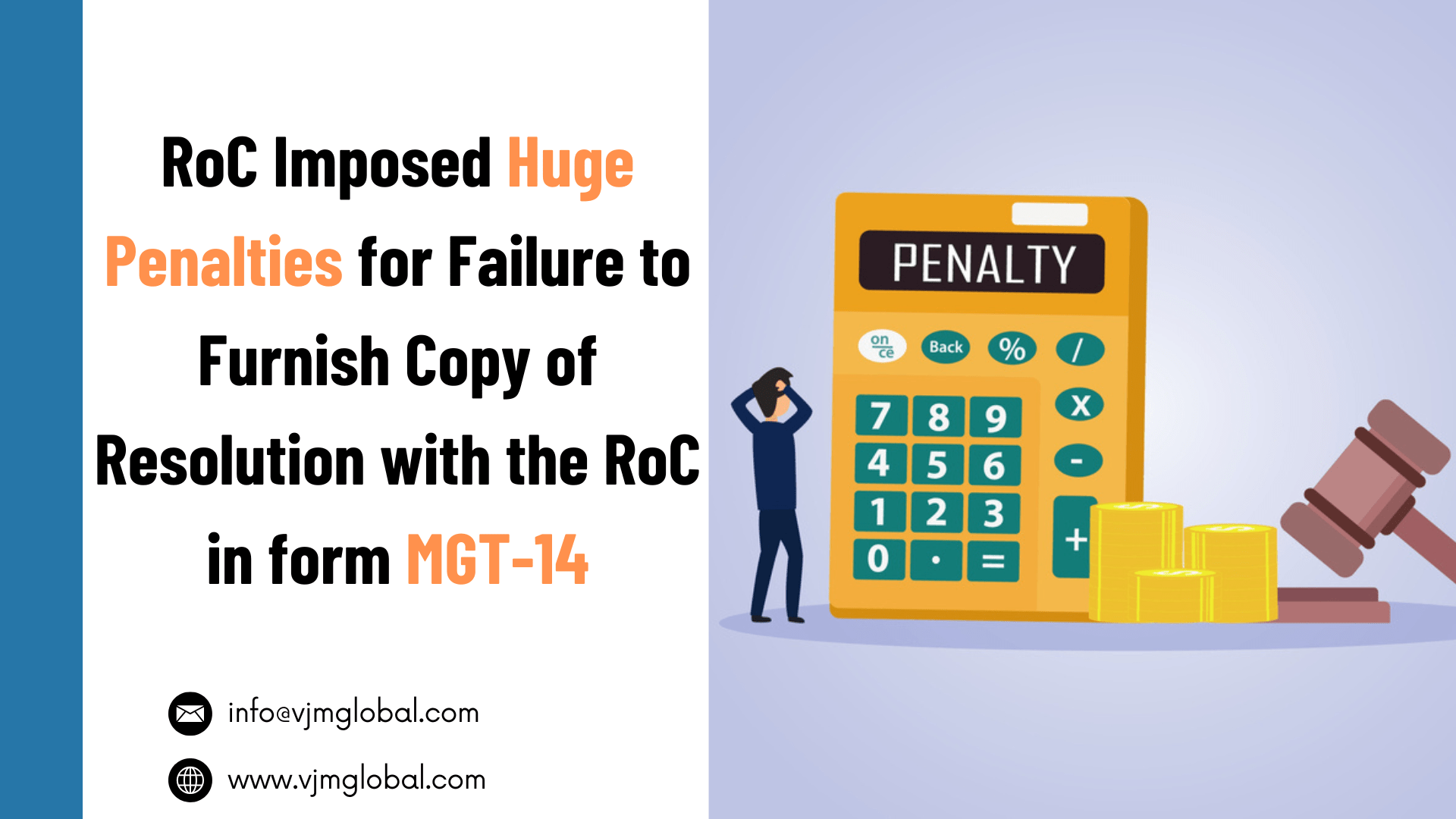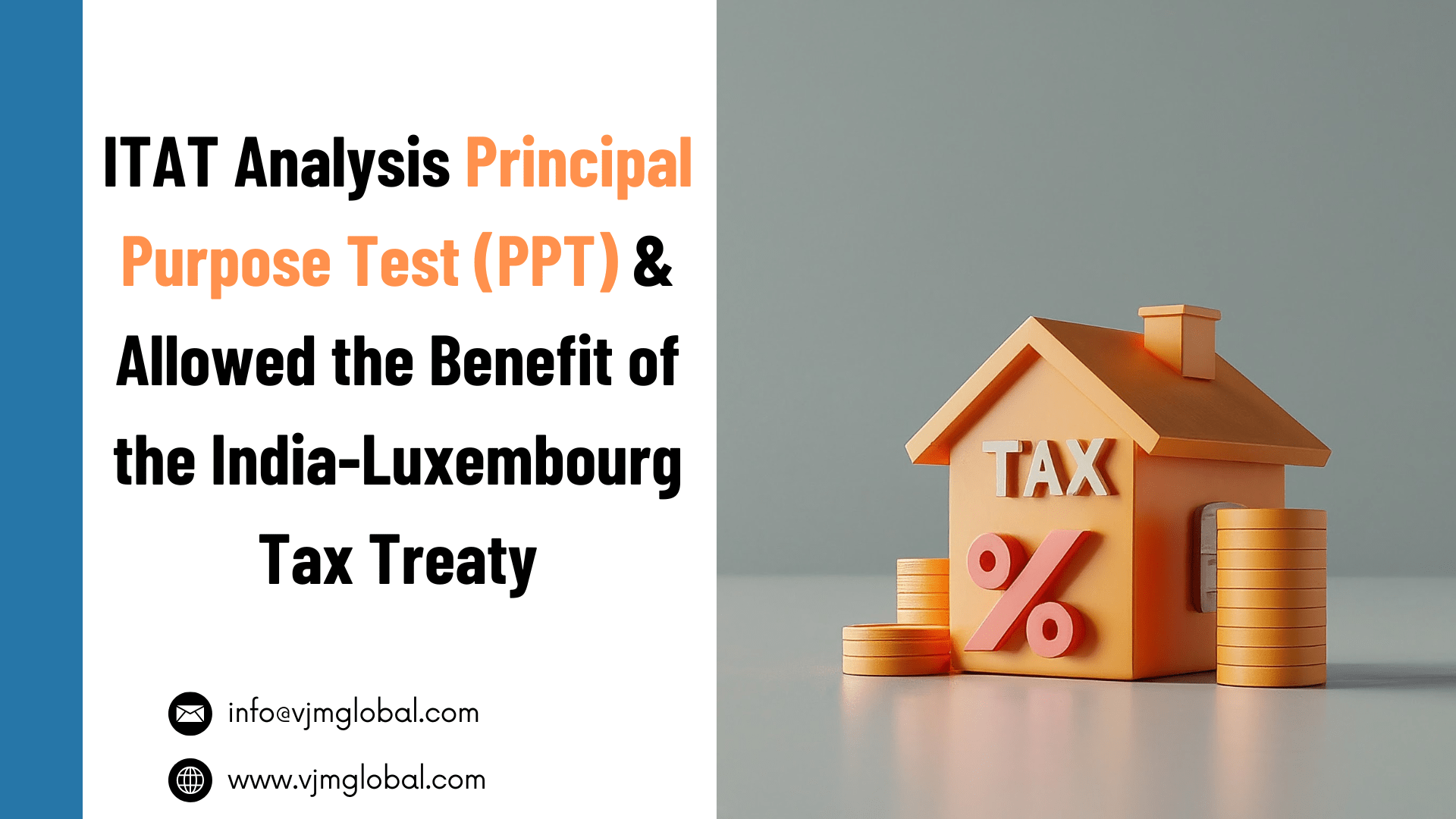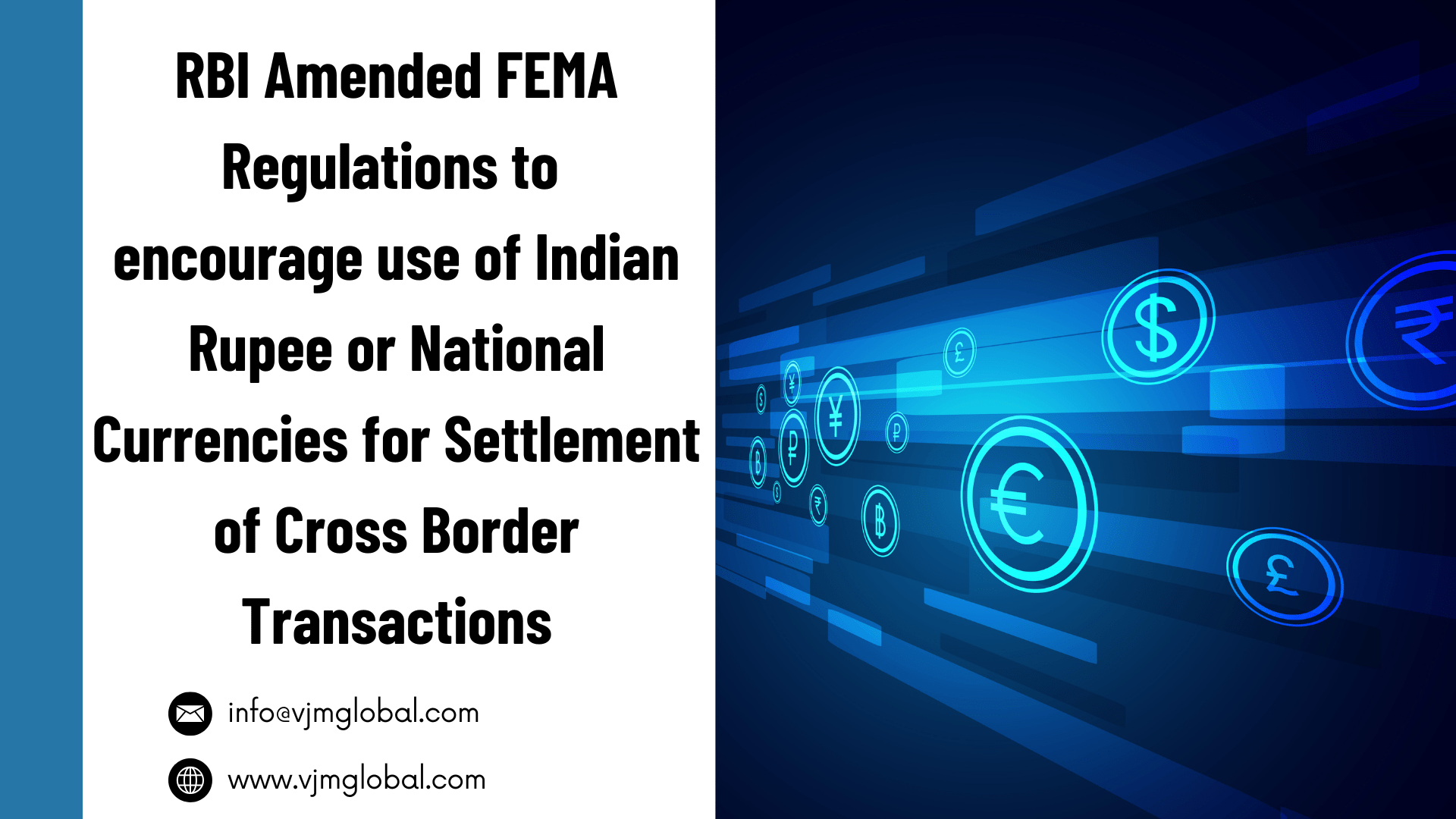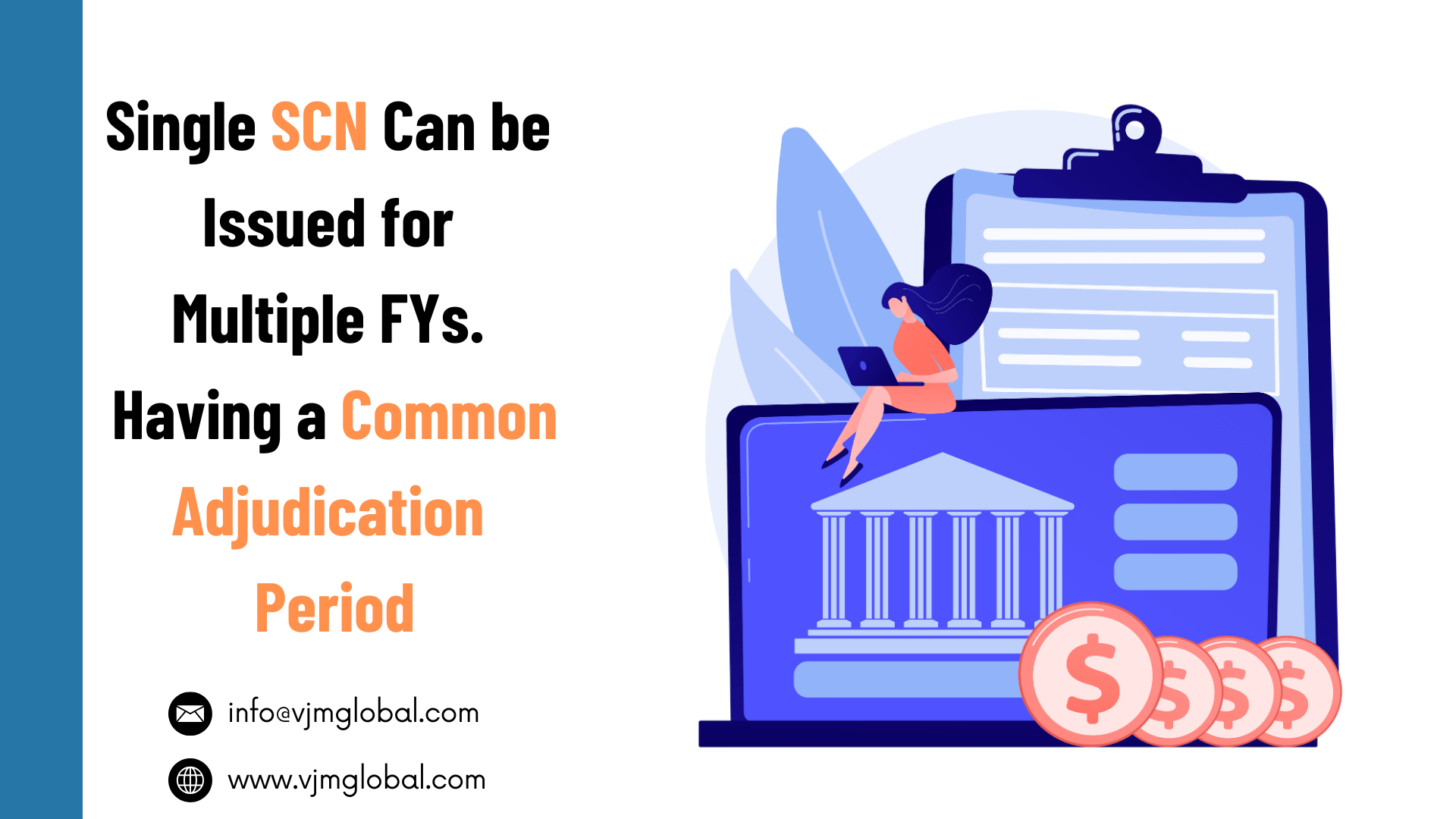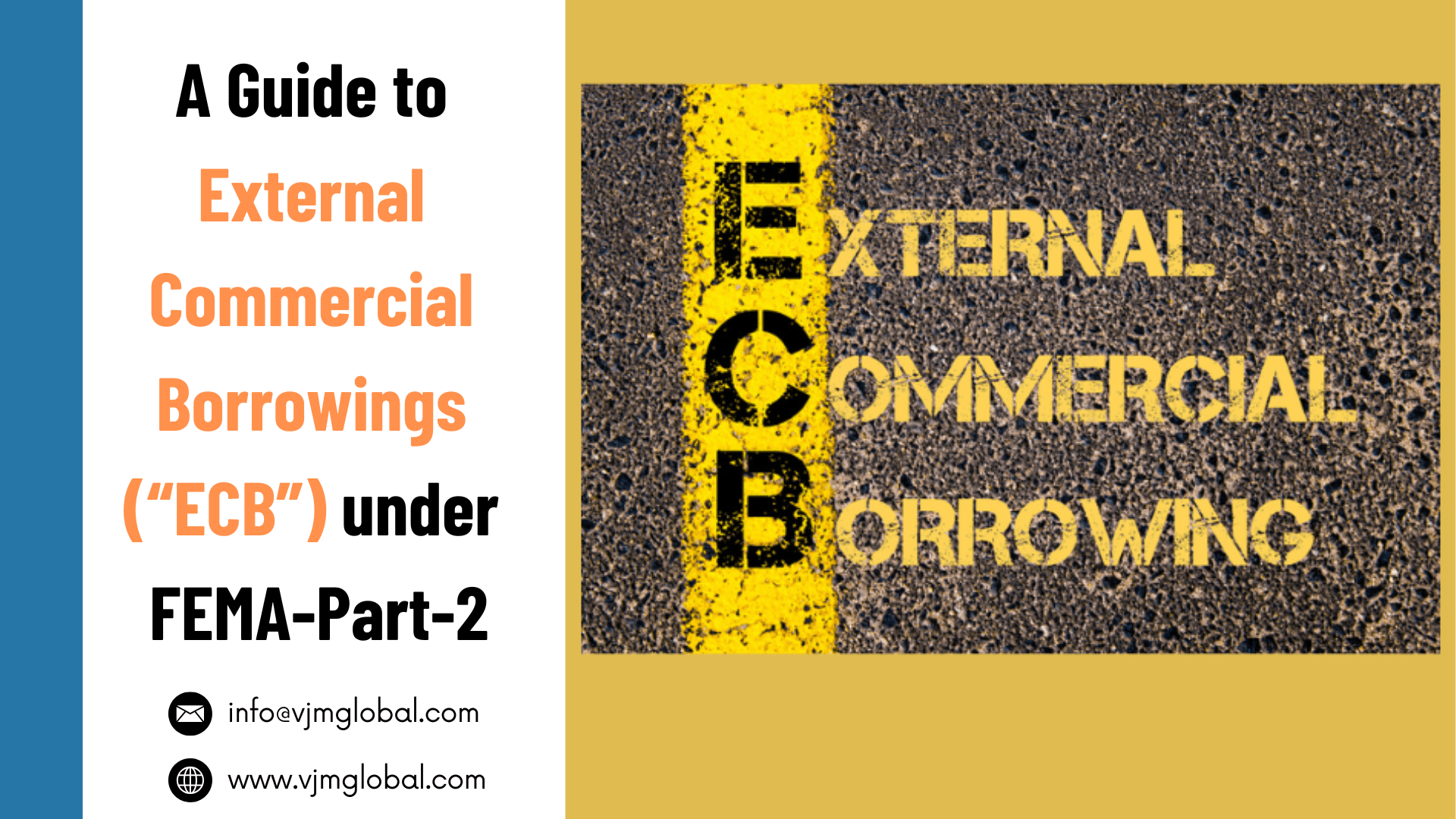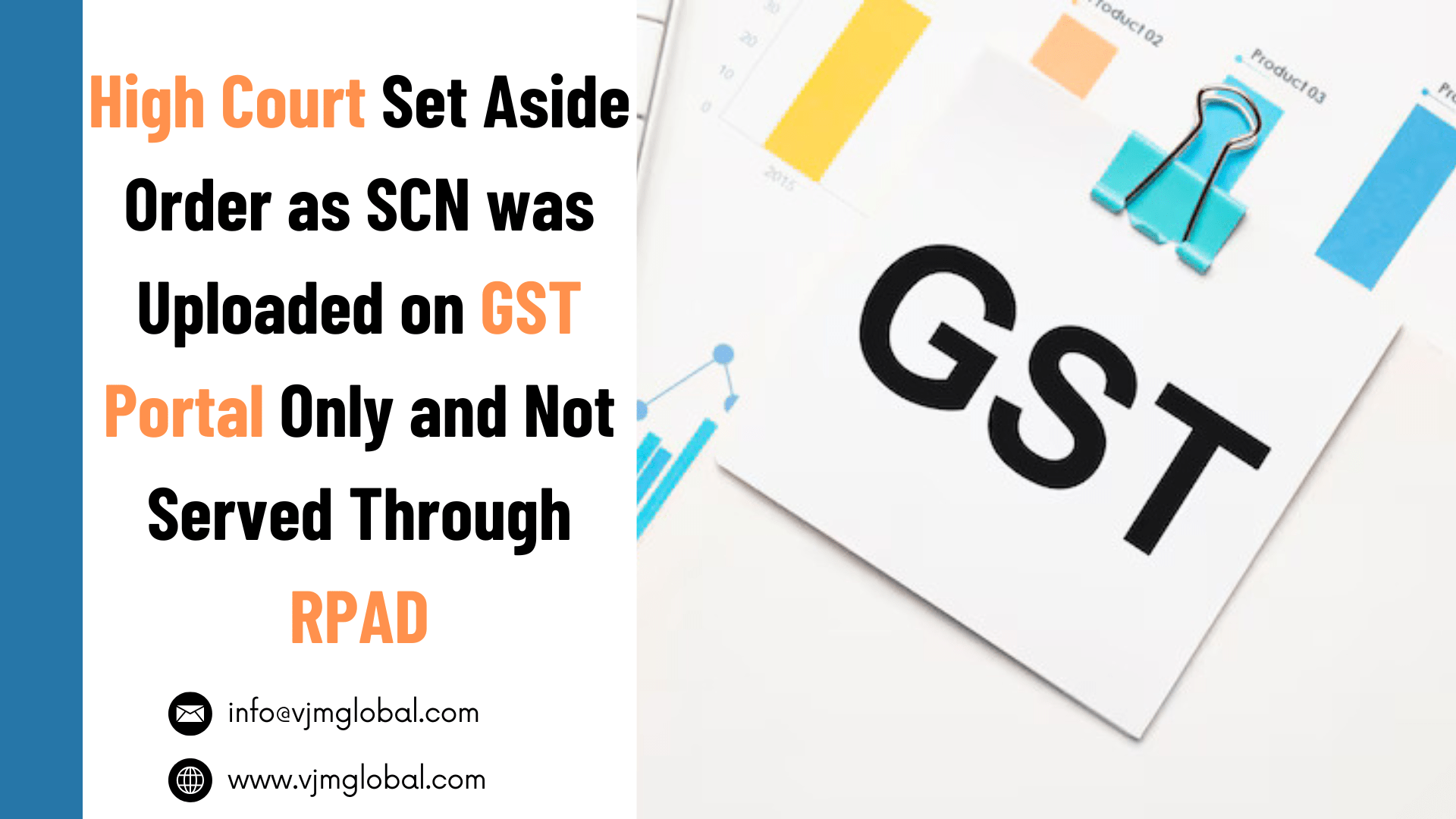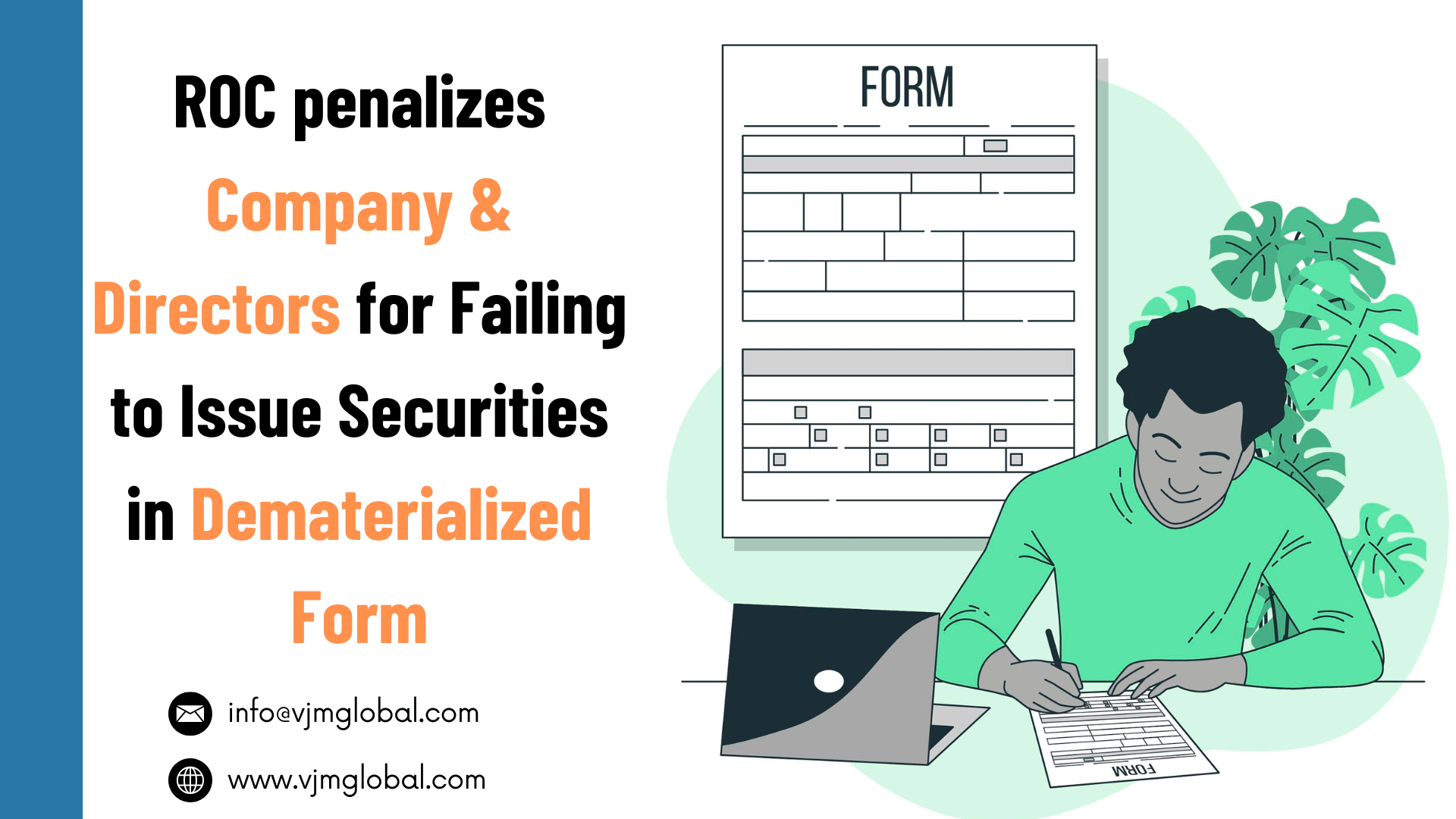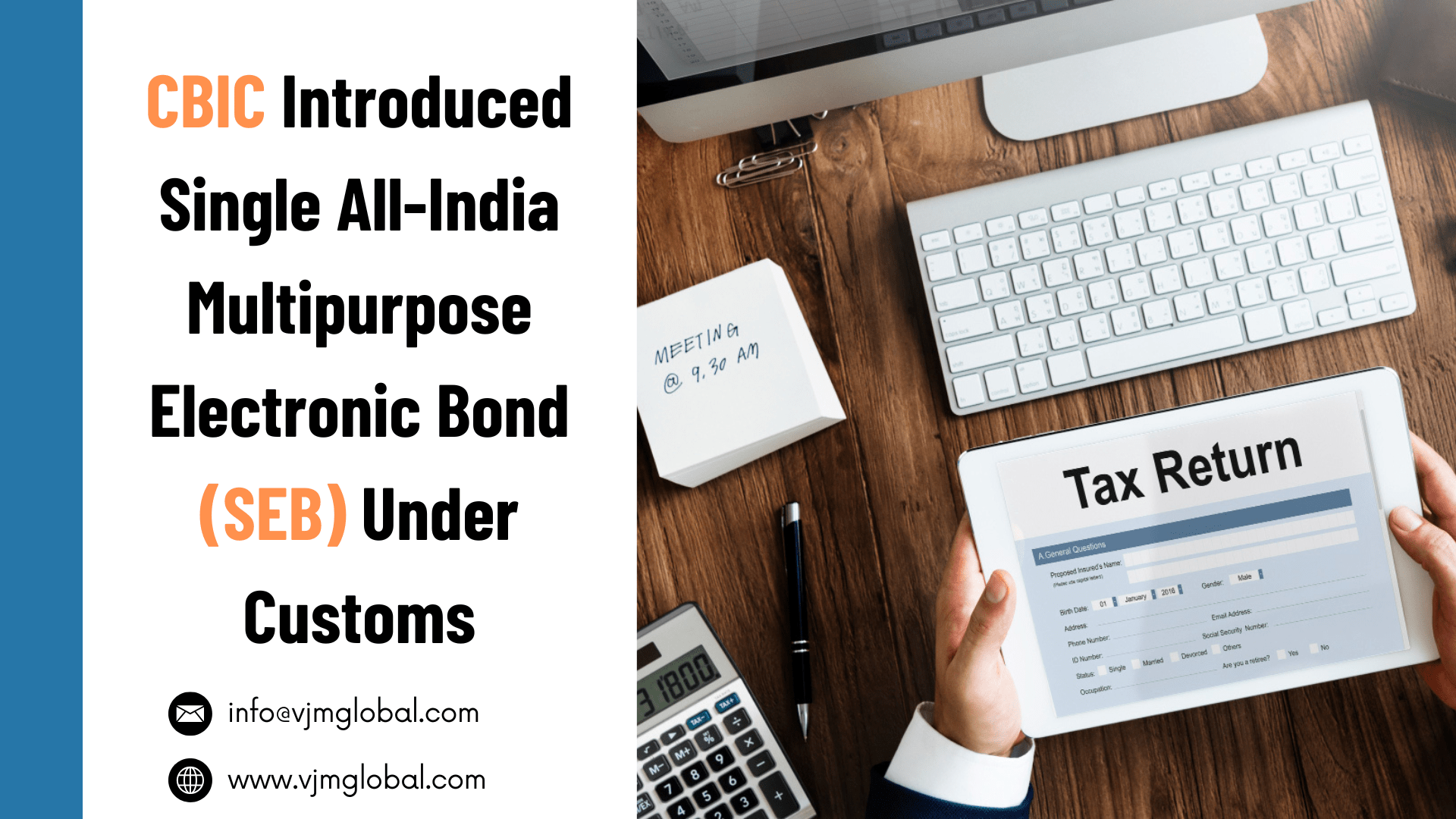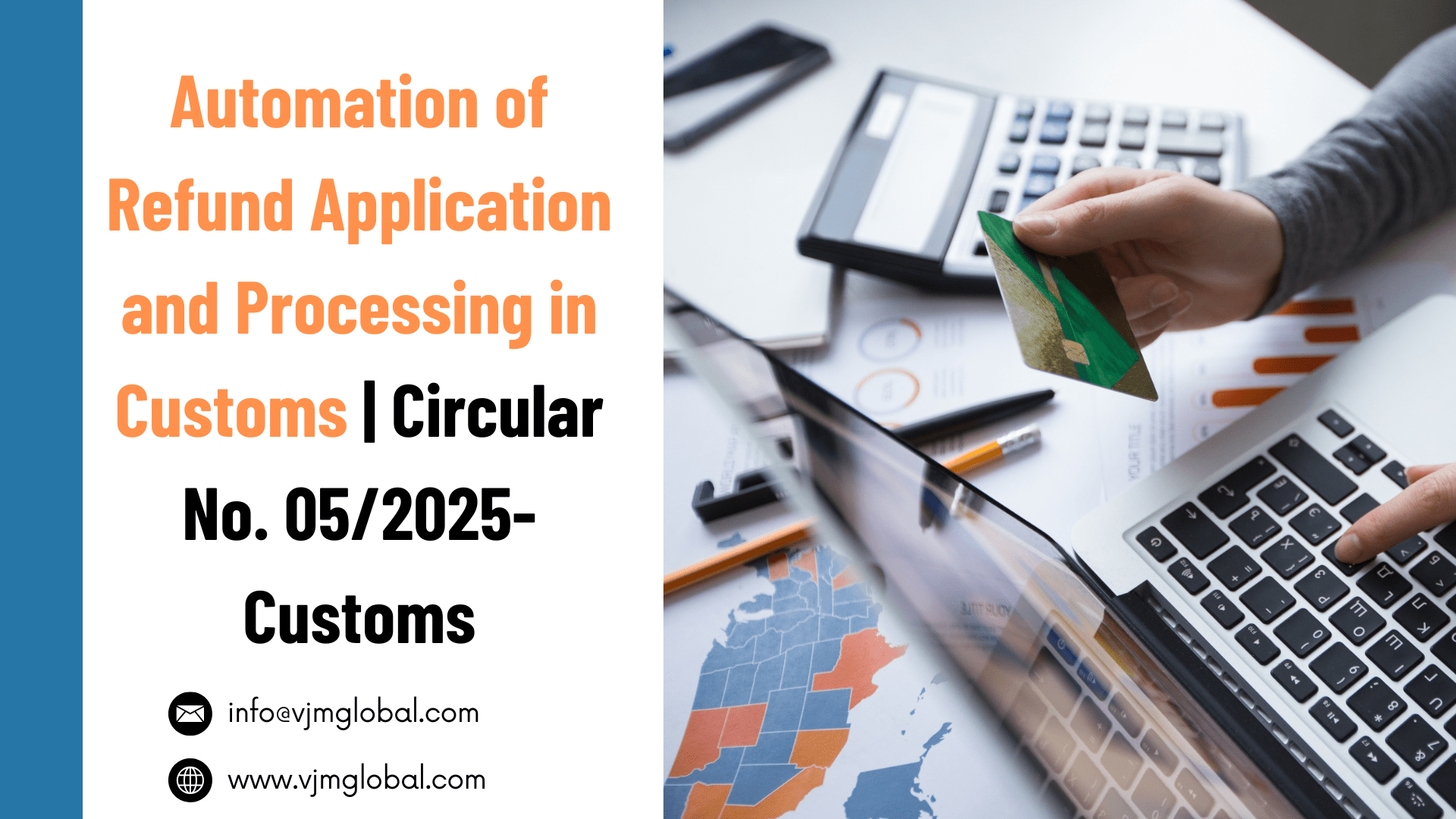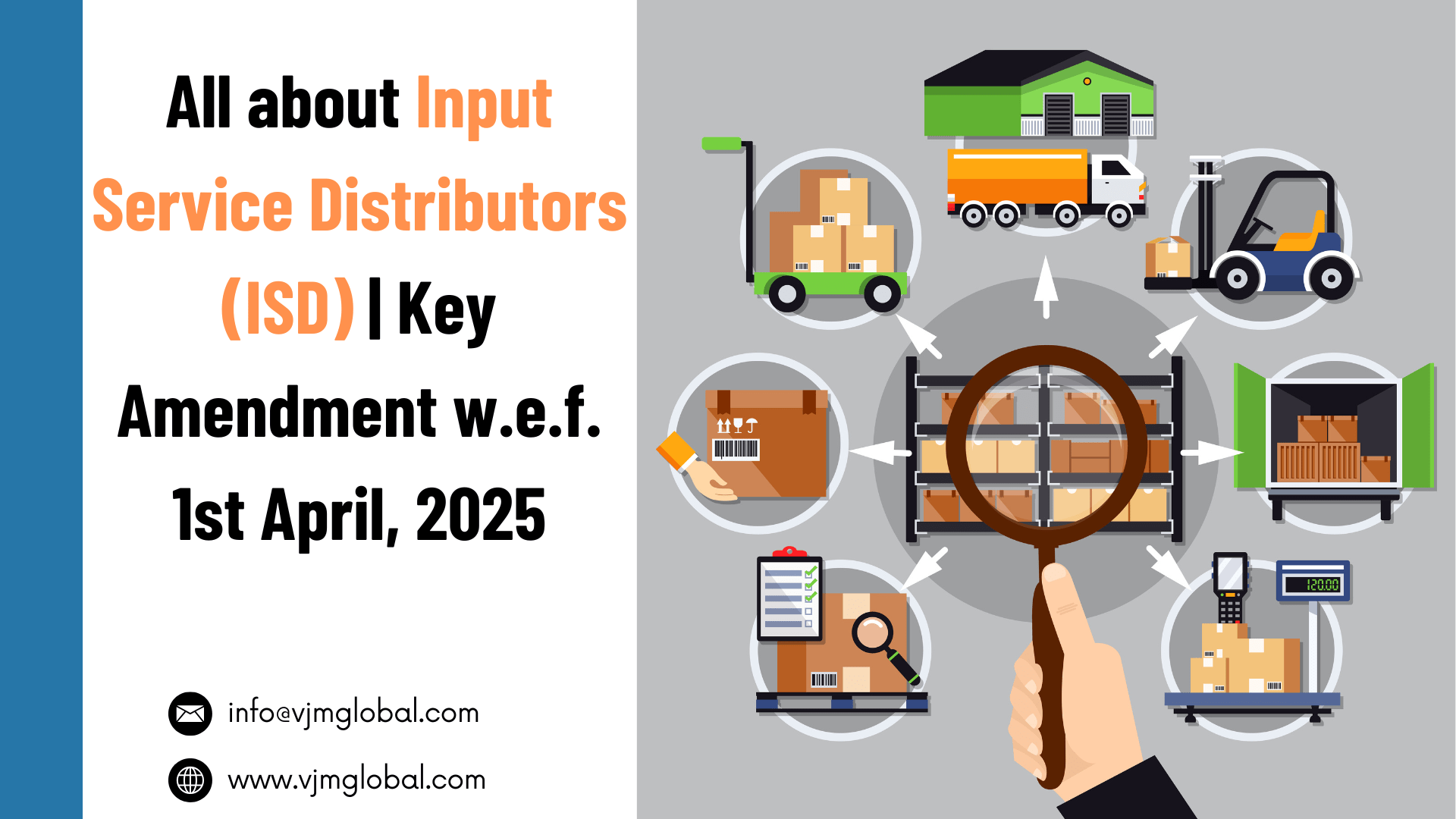E-commerce platforms are spread worldwide and sellers are selling their products across the globe. Today, every single product, from a thread to a laptop, is delivered in every corner of the world even in single or multiple quantities. These sales are done through e-commerce platforms or through listing products on websites or different social media platforms.
In the case of exporting through e-commerce platforms, as quantity and value is very small, sellers can’t hire a CHA for every single item. Therefore, the easiest way of exporting the product is through the post. With an increase in sales through e-commerce platforms, exports through posts have increased substantially.
Considering the vast network of post offices and how much MSMEs are exporting extensively through the post, CBIC, in collaboration with the Department of Post (DoP), has developed a dedicated Postal Bills of Export (PBE) automated system for postal exports.
In this article, a detailed discussion has been carried out on how CBIC has automated the postal export platform.
1. Existing exporting process through Post
- So far, exporting through the post is entirely a manual process. Seller is required to take his parcel to any of 28 notified Foreign post offices* for export where the Postal Bill of Export (PEB) is prepared manually by the Post office officials. The Postal Bill of Export is the Shipping Bill which demonstrates export.
- After the export of the parcel, PBE is stamped by customs officers confirming the export and a corresponding Shipping Bill Number and EGM (Export General Manifest) number is stamped manually on PBE.
- Thereafter, the exporter is required to physically collect such stamped PBE from the post office and such PBEs are submitted with government officers for claiming export-related refunds.
- Like other shipping bills, GST officials also do not have any window to check the Shipping Bill Number and EGM on government portals.
* Postal Department facilitates import and export of goods by Post Parcels at Foreign Post Office and sub-Foreign Post Offices. Customs facilities for examination, assessment, clearance, etc. are available at these Post Offices. Facility for export clearances is also available at Export Extension Counters opened by the Postal Department where parcels for export are accepted and cleared by the Customs.
2. PBE Automated system
- CBIC has notified Postal Export (Electronic Declaration and Processing) Regulations, 2022 vide N/No. No. 104/2022-Customs (N.T.) dated 9th December 2022 and also issued circular No. 25/2022-Customs to clarify the process.
- These regulations are meant to facilitate the processing of commercial postal exports by automating the entire procedure and seamlessly connecting the postal export network to notified Foreign Post Offices (FPOs).
- In the automated system, exporters will not be required to visit foreign post offices. Rather, he can file PBE online from his own place and hand over the consignment to a nearby post office (not necessarily Foreign Post Office) for export.
- The Department of Post shall forward the consignment from the post office to the foreign post office for export clearances.
- Entire export clearance shall take place on digital platforms while harnessing the existing post office network spread across the country and will be amenable to being scaled up to cover small exporters/producers located in remote areas.
An exporter is required to undertake the following steps for exporting commercial parcels through post:
2.1 Access to PBE Automated System
- PBE Automated system can be accessed by the trade using the link https://dnk.cept.gov.in/customers.web. This link will direct the user to the following login page of “Dak Ghar Niryat Kendra- Customer Portal”.
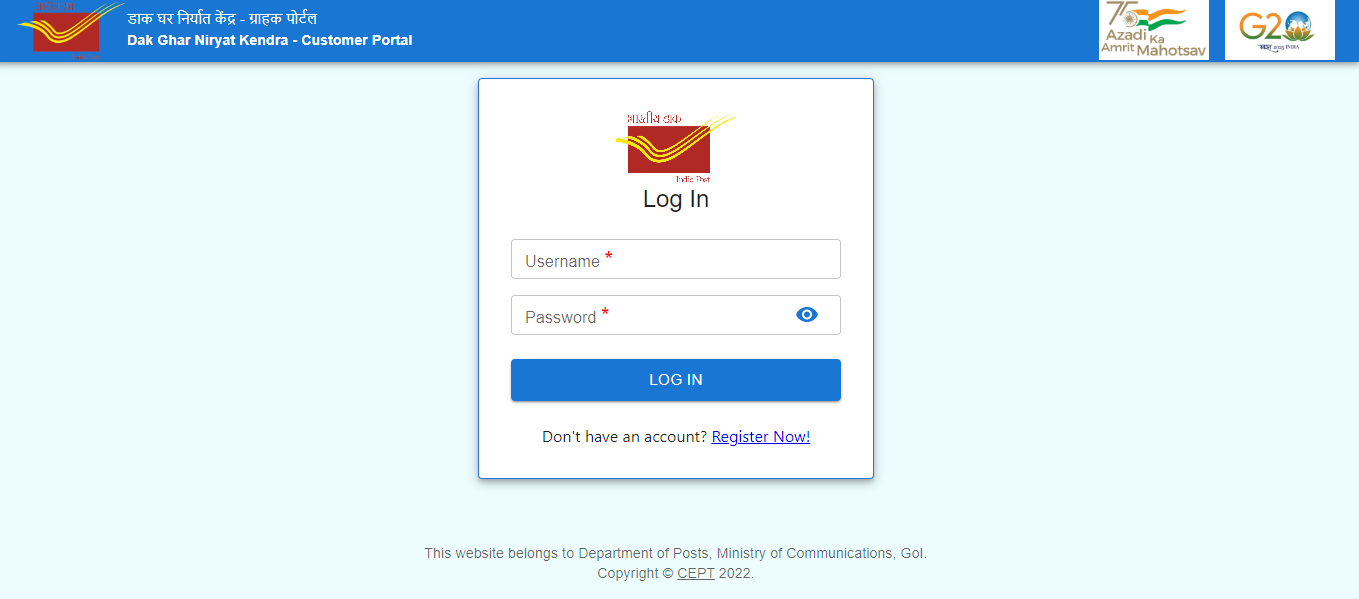
- Similarly, the customs officers can access the export documents uploaded by the exporter for custom clearance by going to the link http://ips.cept.gov.in/customs.web/login.aspx. This link will direct the custom officer to the login page of “Dak Ghar Niryat Kendra- Customer Portal”.
- The Department of Post shall share the detailed procedure of using this portal on a later stage for both exporter and customs authorities.
2.2 Registration on PBE Automated System
- As per Regulation 4 of Postal Export (Electronic Declaration and Processing) Regulations, 2022, every exporter is required to register himself on the PBE Automated system. On the login page, after clicking on “Register Now”, the following registration form shall pop up:
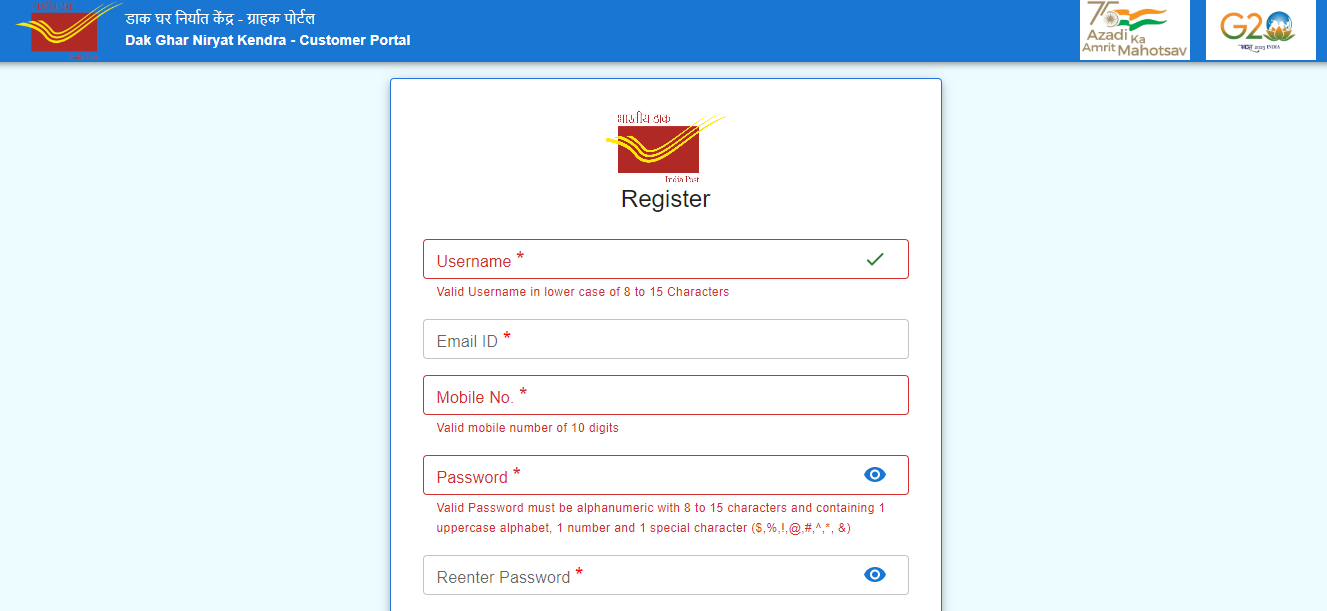
- The registration process shall begin with OTP Based authentication. OTP will be received on the registered mobile number.
- On authentication of mobile number, the exporter shall update his personal and business information on the portal such as Name, Address, IEC Number and GSTIN, etc, and shall upload the KYC Documents.
- Exporters shall be given a username and password to access the system.
- In the present form, the PBE Automated system also provides for registering details of authorized agents where required.
2.3 Booking of Postal Articles for Export
- To book an article on the PBE Automated system, the exporter is required to log in at the portal using his login id and password.
- PBE Form shall appear under the “Article Booking” sub-menu and the Exporter shall fill in the required fields of the PBE Form such as Description of Consignments, Export designations, sender’s and receiver’s details, etc.
- If the exporter wants to avail service of an authorized agent, then the exporter shall also fill in the agent’s name, address, and customs broker’s license number.
- On completion of said process, an article booking reference ID and a PBE number will be auto-generated.
- The Exporter can print the CN 23 (Custom Declaration) form or Harmonized label, as appropriate, corresponding to the export.
- In case of multiple consignments, the portal also provides the feature of bulk upload of information and supporting documents.
2.4 Further processing at Booking Post Office (BPO)
- Once the article is booked on the Automated PBE portal, the exporter or his authorized agent shall physically deliver the export article to the nearest or convenient Booking Post Office.
- DoP shall authorize certain post offices as BPOs and corresponding FPOs as given in Regulation 6 of Postal Export (Electronic Declaration and Processing) Regulations, 2022.
- At BPO, postal authorities shall verify the declaration given on the package with respect to the weight of the article and the destination country name. Postal Authorities shall collect the necessary fees.
- KYC documents shall also be obtained of the person bringing the parcel to the BPO. Upon successful handover of the parcel at BPO, postal authorities shall be responsible for the secure transfer of the package to the FPO and its further processing and export.
2.5 Custom procedure at FPO:
- The postal authorities shall present the article to the proper officer at FPO for custom clearance.
- The proper officer shall access the customs portal as per the role allocation, i.e., assessment, inspection, examination, or escalation, as assigned by the system administrator.
- The system administrator is appointed for allocation purposes by the jurisdictional principal commissioner or commissioner.
- Proper officers can fetch the details of PBE at the customs portal for assessment and final clearance.
- The exporter or his authorized agent shall pay the export duty, if applicable.
2.6 Course of Action in cases of any query is raised during the customs clearance process
- If the proper officer has any doubt, he may call for additional information or documents, or clarification from the exporter by raising a query on the portal.
- Exporters will be notified about the issue raised under the bell icon of the exporter web page.
- Exporter will be allowed to submit information or upload documents in response to the query raised. Reply submitted by the exporter shall be available to the proper officer under the “Customer Referral” sub-menu.
2.7 Clearance or cancellation of export
- Once the proper officer is satisfied with the declaration and duty assessed and other charges have been paid, he may clear the package.
- However, The proper officer may detain any export package for further investigation.
- The proper officers may also cancel the export if export items are prohibited.
- Exporter may also cancel his export consignment, before the communication of the custom decision, due to any reason such as order cancellation, etc.
- Upon cancellation, postal authorities shall be responsible for the secure movement of goods from the FPO to the concerned BPO.
2.8 Claim of Export incentives
- Once the export consignment is cleared by customs authorities for export, the exporter will be able to download the final PBE from the portal. Final PBE will be available under the “Forn Download” sub-menu.
- Exporters can use such final PBE for claiming export incentives, wherever applicable.
- Further, as per Regulation 7(6), it is the responsibility of postal authorities to furnish the proof of export and corresponding electronic data to customs authorities.
- However, till data interchange between the custom server and the postal server is enabled, the procedure for IGST refund prescribed in Circular No. 14/2018 dated 4th June 2018 shall be followed.
- Also, PBE Form has a field to indicate whether the duty drawback is claimed on the postal export. For claiming drawback, the exporter is required to follow the procedure outlined under Rule 12 of Customs and Central Excise duty Drawback rules, 2017.
Further, as per regulation, records related to postal export by the exporter or his authorised agents are required to be retained for five years. Further, for smooth transition and stabilization of the new automated system, the manual procedure provided earlier (Notification No. 48/2018-Customs (NT) read with Circular No. 14/2018-customs, dated 4th June 2018) will continue to be in operation till such time the such manual procedure is specifically suspended.
2.9 Roles and responsibilities of Authorised Agent
- An authorized agent of an exporter can file an electronic declaration on his behalf and assist the exporter in performing the functions related to the clearance of export goods through the post.
- The exporter authorizing such agent shall be fully responsible for all acts and transactions carried out on his behalf by such agent and shall be liable for any penal provisions applicable under these regulations or any other act.
2.10 Penalty
- Any person who contravenes any of the provisions of these regulations or fails to comply with any of the provisions of these regulations with which it was his duty to comply, shall be liable to a penalty to an extent of the amount specified under clause (ii) of sub-section (2) of section 158 of the Act.

